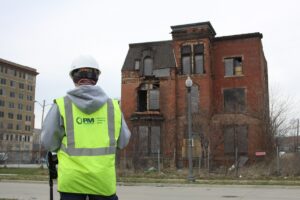Redeveloping Brownfield Properties: Balancing the Benefits and Risks
 In many major cities, revitalization is all the rage. This is with good reason; nobody wants to live and work in areas with abandoned buildings or lots nearby. The solution seems simple: just repurpose all of the brownfields. Is it so simple after all? What are the risks involved? And what exactly is a brownfield?
In many major cities, revitalization is all the rage. This is with good reason; nobody wants to live and work in areas with abandoned buildings or lots nearby. The solution seems simple: just repurpose all of the brownfields. Is it so simple after all? What are the risks involved? And what exactly is a brownfield?
Brownfield properties are properties with a history of industrial or commercial use. They can be valuable assets to communities when redeveloped properly. It’s important to understand that such redevelopment also carries the potential for environmental risks and liabilities. This is why it is essential to conduct proper due diligence before any redevelopment takes place.
Benefits of Redeveloping Brownfield Properties
Redeveloping brownfield properties can bring significant benefits to communities. It can revitalize underutilized or abandoned properties, putting them back into productive use. This can spur economic development, create jobs, and increase tax revenue for the community. Plus, brownfield redevelopment can promote sustainable growth by repurposing existing infrastructure, conserving open space, and reducing urban sprawl.
Another important benefit is the potential to improve public health. Cleaning up contaminated sites and reducing exposure to hazardous substances can have a huge impact on the well-being of the people who live nearby. It can also enhance the community’s quality of life by creating new parks, green spaces, and community amenities.
Environmental Risks and Liabilities
Unfortunately, redeveloping brownfield properties also carries the potential for environmental risks. These properties may have been contaminated with hazardous substances such as lead, asbestos, or petroleum products, posing risks to human health and the environment. Such contamination can migrate off-site, affecting neighboring properties, groundwater, and surface water.
Another issue to consider is liability. Potential liability issues can arise for property owners or developers, who may be held responsible for any environmental damage or cleanup costs. These liabilities can be significant, with cleanup costs running into millions of dollars. This is why it is crucial to conduct proper due diligence before any redevelopment takes place.
Conducting Proper Due Diligence
Before starting any redevelopment project on a brownfield property, it’s important to do due diligence. Proper due diligence involves a thorough investigation of the property’s history, current use, and potential environmental liabilities. This typically involves conducting a Phase I Environmental Site Assessment (ESA) and, if necessary, a Phase II ESA. A Phase I ESA involves a review of available records and site inspections to identify potential environmental concerns. If any concerns are identified, a Phase II ESA may be conducted, involving sampling and testing of soil, groundwater, and other environmental media.
It’s important to hire a reputable environmental consulting firm with experience in this area. They can help you identify potential risks and liabilities, and help you address them properly. By taking care of these issues upfront, you can make sure the project is safe and sustainable for everyone involved.
Redeveloping brownfield properties can be a great way to improve the community, but it’s important to do it right. Make sure you understand the potential risks and liabilities involved and do your due diligence before starting any project. That way, you can make sure the redevelopment is safe, sustainable, and benefits everyone for years to come.
Publication Details
Date
April 13, 2023



